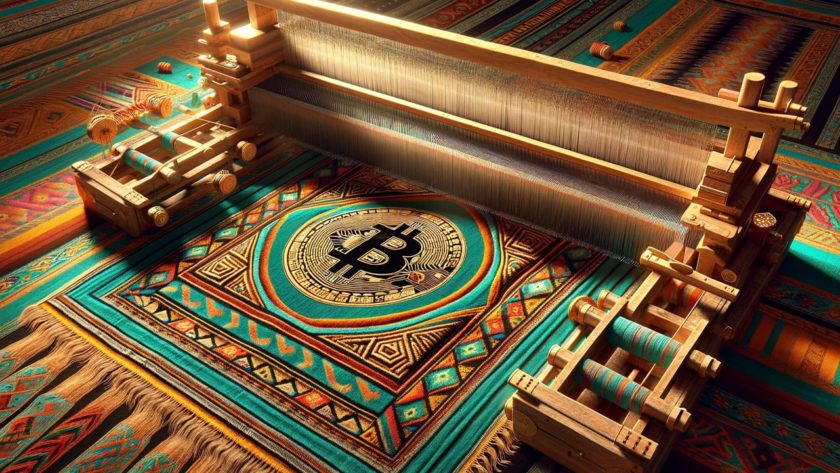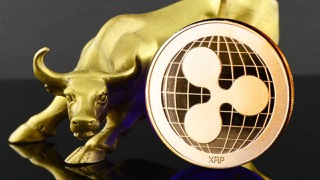As a cryptocurrency information resource, we get a lot of questions. We make every effort to provide helpful answers in plain English and, of course, user questions give us a lot of information too. They let us know what newcomers to the space find important, difficult, or confusing.
One question which has been coming up a lot lately is…
How Do I Mine Ripple (also known as XRP)?
Well, to answer it simply, you can’t. In fact, many of the coins we’re used to seeing in the coin price rankings aren’t mineable. Compare these two lists from CoinMarketCap, showing all coins vs. mineable coins:
Why Can’t Ripple be Mined?
Mining is mainly essential in the case of completely decentralized cryptocurrencies, like Bitcoin. By remaining open to anyone with the necessary skills and resources to mine, Bitcoin theoretically prevents any single entity from controlling the blockchain.
Unlike Bitcoin, XRP is issued by Ripple, with most distributed servers related to Ripple, thus rendering independent mining non-essential. In much the same way as AMZN shares are issued by the Amazon company, XRP was issued directly by the Ripple company rather than being mined into existence. The only way to acquire Ripple is therefore to buy or earn it.
Here are Some Ripple Basics
Symbol: XRP
Current Supply: 39,245,304,677 (39 billion) XRP
Supply Cap: 100,000,000,000 (100 billion) XRP
Ripple Pros:
- Ripple transactions are extremely fast, confirming within seconds,
- Ripple can reach 50,000 transactions per second in throughput,
- The Ripple network requires no significant electrical consumption.
Ripple Cons:
- The system can potentially be shut down or altered by the state.
- Transactions occur at the company’s discretion and may be reversed or frozen.
What is the goal of Ripple?
Ripple is more targeted at improving the existing banking system, rather than replacing it. Ripple’s success therefore ultimately depends on acceptance by major banks and central banks. However, according to Ripple themselves and NYT fintech journalist, Nathaniel Popper, they still have a long road ahead of them, as the highly-conservative banking industry is unlikely to make the jump any time soon
A further point of concern is that Ripple remains unsupported by major American exchanges, besides Kraken. A Coinbase listing would probably do a lot for Ripple.
If you have any further questions on getting hold of Ripple, see our complete guide to the process, How to Buy Ripple in 3 Simple Steps. Hope this cleared a few things about Ripple and about why it can’t be mined.
The History of Ripple
RipplePay was created by Ryan Fugger in 2004, 5 years before Bitcoin’s release, with the intention of replacing banks. It allowed for peer-to-peer lending and payments but users could default on obligations. RipplePay was an interesting model but didn’t catch on.
Inspired by Ripplepay, Jed McCaleb founded the eDonkey file sharing network. McCaleb was also the creator of Mt. Gox. In 2011, the eDonkey team began work on a cryptocurrency in which mining work was replaced by social consensus (similar to the approach of modern cryptos like EOS). In 2012, McCaleb bought out RipplePay and renamed the project to OpenCoin.
OpenCoin implemented the Ripple Transaction Protocol (RTXP) as a means to send money directly and rapidly between users. Customs tokens, representative of real-world assets, were made possible within RTXP, raising the question of XRP’s purpose. Financially-compliant Ripple Gateways, such as the Bitstamp exchange, manage the interchange between the RTXP network and other assets. These Gateways shifted trust away from network peers to authorized financial institutions.
OpenCoin conducted a major XRP giveaway in early 2013, awarding 1000 XRP to any BitcoinTalk forum user who requested it. This year marked the point at which the current XRP asset was implemented. OpenCoin also succeeded in raising a lot of venture capital funding in 2013. McCaleb left the company around this time and went on to create Stellar, which is similar to Ripple. OpenCoin then changed its name to Ripple Labs, shortening this to just Ripple in 2015.
Sometime around 2013, Ripple pivoted away from being a transaction protocol for users to being a specialized settlement network for banks. Ripple then added numerous features to aid compliance, such as the ability to freeze user assets. The first bank to get involved was Germany’s Fidor Bank, followed by America’s CBW bank. Several other banks and payment services have since gotten involved in the Ripple project.
Author Update:
This article has proven rather controversial and received some strongly critical feedback. I’d like to address some of the points raised in the comments section, which are also summarized on the XRP FUD Bingo site.
Some clarification regarding the difference between XRP and Bitcoin-like coins: Ripple uses HashTree rather than a standard blockchain. According to Global Coin Report, HashTree is a “functional programming data structure that provides consensus to the ledger by comparing and validating the summarized data.” While HashTree can be considered a blockchain, it’s not considered decentralized.
As for the existence of validators proving Ripple is distributed; while that is indeed correct, I would like to point out that as of the writing of this article there are only 2 non-Ripple validators. One can create a custom list of non-affiliated validators, still, a Ripple client needs to download 5 keys from Ripple.com to operate.
As for state censorship of the Ripple network, it’s asserted that this is impossible because Ripple is considered decentralized by many. while non-ripple validators aid decentralization, they are known and thus subject to state pressure.
When it comes to the possibility of freezing assets, there is a precedent for that. Some of Jed McCaleb’s XRP was frozen by Bitstamp at the behest of the Ripple company.
In summary, the objective perspective on Ripple in this article largely accord with those of respected industry experts, who’ve researched this subject in considerable depth. As such, I don’t believe these points can be glibly dismissed as mere bias or FUD.




